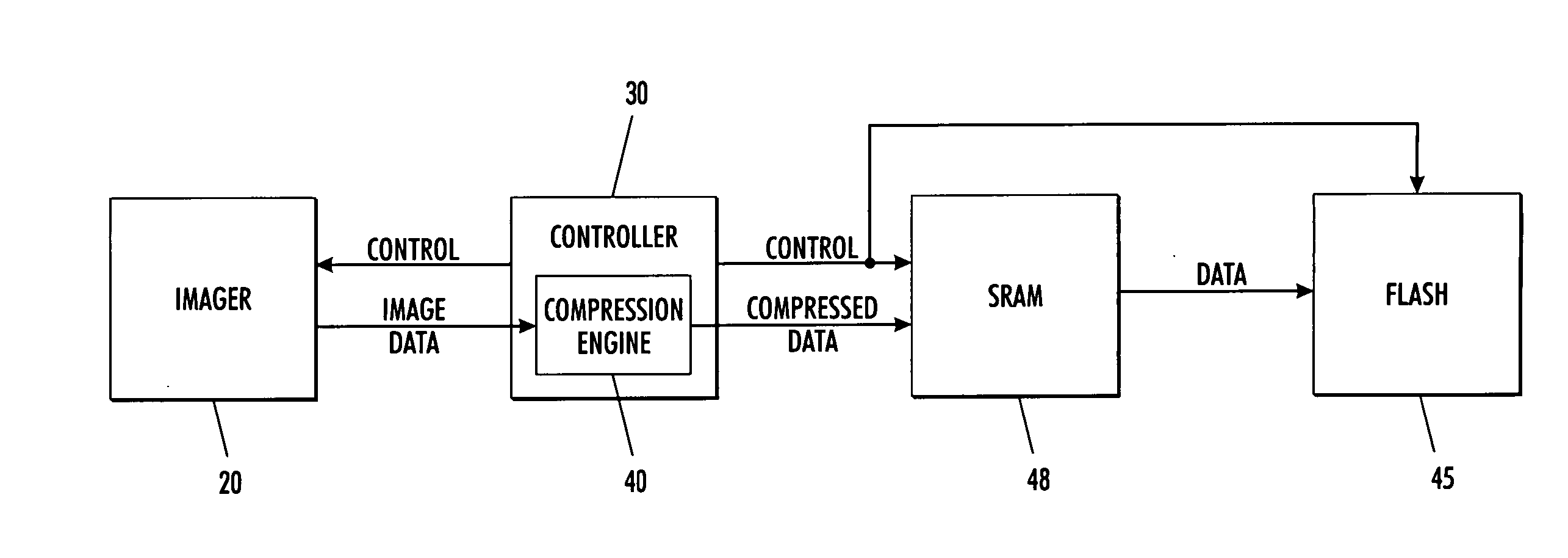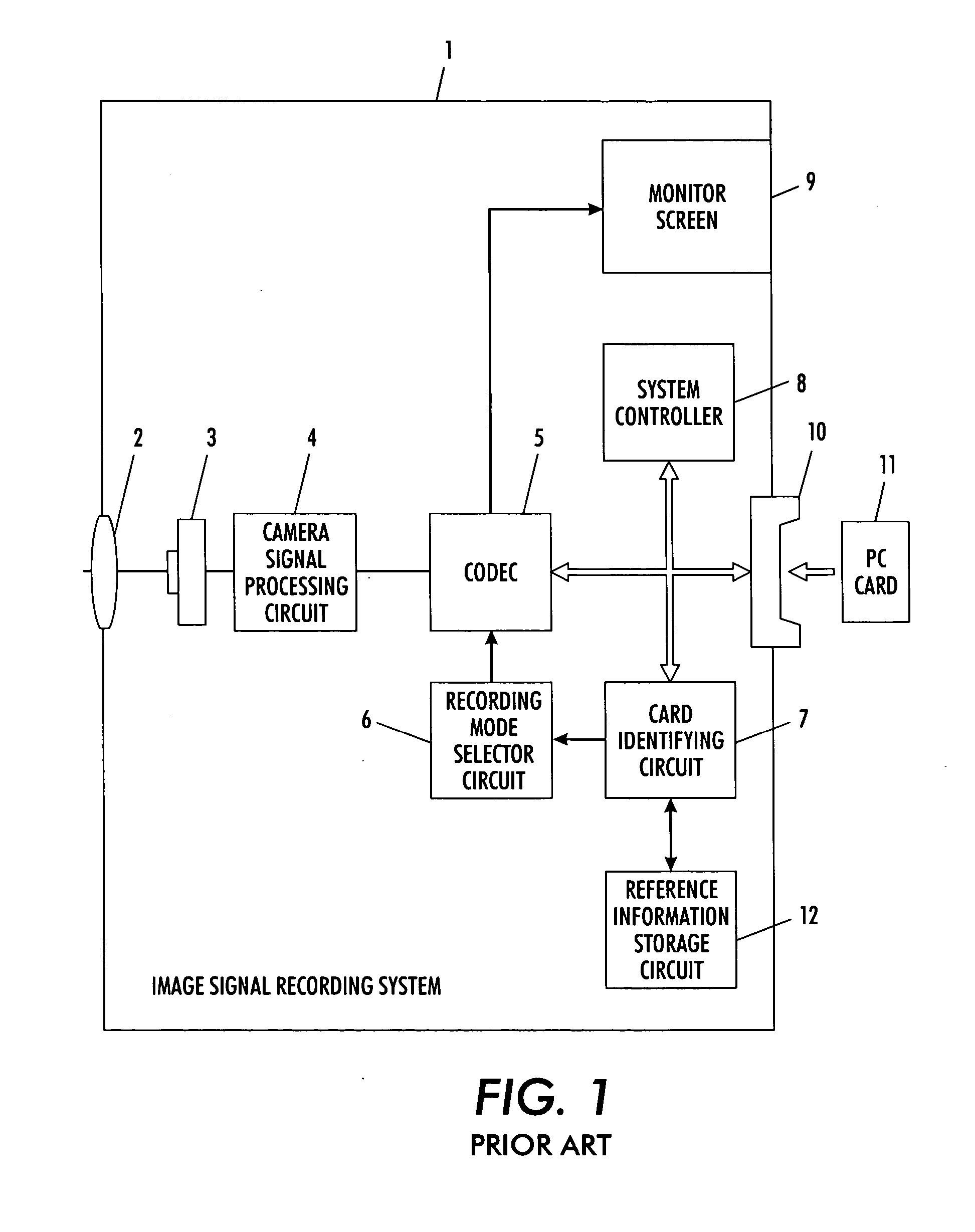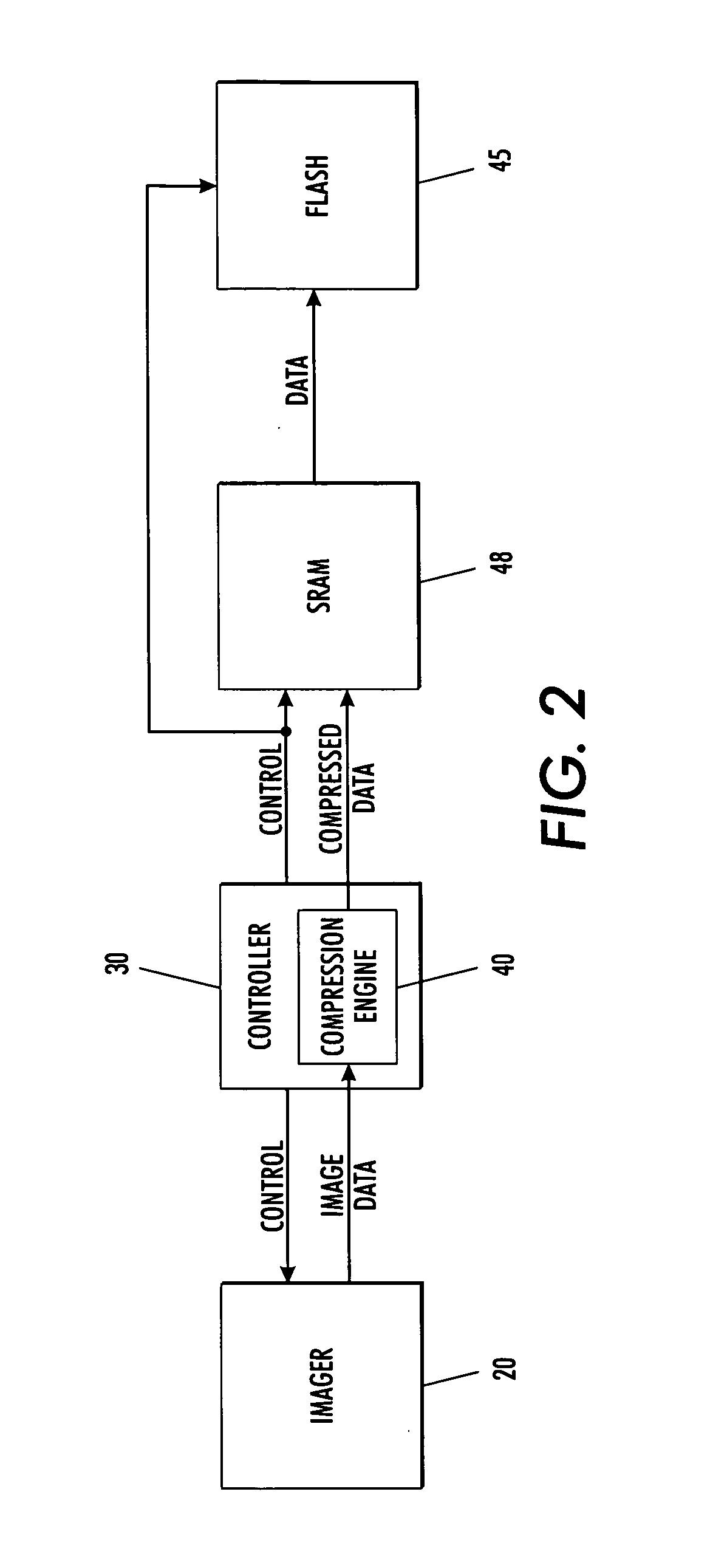In-stream lossless compression of digital image sensor data
a digital image sensor and data compression technology, applied in the field of in-stream lossless compression of digital image sensor data, can solve the problems of flash memory not being able to accept data at a speed, image sensor cannot store acquired image data for longer, and fig. 1 does not reflect typical low-end cameras
- Summary
- Abstract
- Description
- Claims
- Application Information
AI Technical Summary
Benefits of technology
Problems solved by technology
Method used
Image
Examples
second embodiment
[0041] In a second embodiment, in accordance with the concepts of the present invention, multiple SRAM buffers are used to accept the image sensor data. For example, the use of a 1 MB SRAM in conjunction with a 512 KB SRAM is sufficient for temporary storage of a full 1.3 million bytes of image data within a single image acquisition frame period.
third embodiment
[0042] In a third embodiment, in accordance with the concepts of the present invention, the image data is compressed in-stream, i.e., on-the-fly, as the image data is acquired from an image sensor during a single image acquisition frame period, and before the data is written to an SRAM. By employing a sufficiently high compression ratio, a SRAM having a storage capability that is less than that required for a selected image sensor can accommodate a full frame of image data.
[0043] For example, with a sufficiently high data compression ratio, image data produced by 1.3 million image sensor pixels can be accommodated by a 1 MB SRAM. Once stored in the SRAM, the compressed image data can then be sent from the SRAM to a FLASH memory at a subsequent time for more permanent storage. The data sent to the FLASH can be in compressed or decompressed form.
[0044] It is noted that for many applications, a compressed form is preferred. This FLASH storage of compressed data enables an increase in d...
first embodiment
[0078] In channel splitting technique, provided in accordance with the present invention, the 8-bit wide image data stream is split it into two 4-bit wide data streams. With this configuration, and employing arithmetic encoding, two histograms are employed during the encoding process to keep track of the encoding statistics for the LSB channel and for the MSB channel independently. This greatly reduces the hardware requirement from that for a single channel process, as this embodiment only requires two 16-bin histograms, and the precision of the histograms can be reduced to 9 bits. This results in a histogram register count requirement of 2.times.9.times.16=288 bits, which is nearly 10 times smaller than that required for a full 8 bit-wide image data stream.
[0079] The channel splitting technique of the present invention can be further extended in accordance with the present invention. For example, the 8-bit wide image data stream can be divided into three data streams; i.e., three d...
PUM
 Login to View More
Login to View More Abstract
Description
Claims
Application Information
 Login to View More
Login to View More - R&D
- Intellectual Property
- Life Sciences
- Materials
- Tech Scout
- Unparalleled Data Quality
- Higher Quality Content
- 60% Fewer Hallucinations
Browse by: Latest US Patents, China's latest patents, Technical Efficacy Thesaurus, Application Domain, Technology Topic, Popular Technical Reports.
© 2025 PatSnap. All rights reserved.Legal|Privacy policy|Modern Slavery Act Transparency Statement|Sitemap|About US| Contact US: help@patsnap.com



